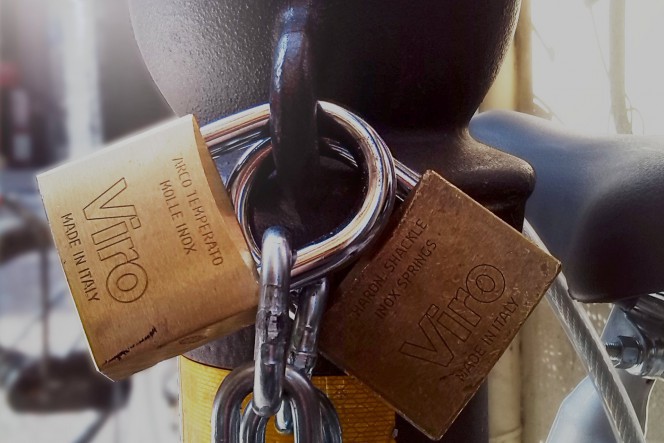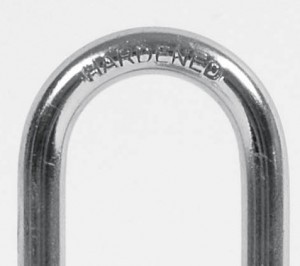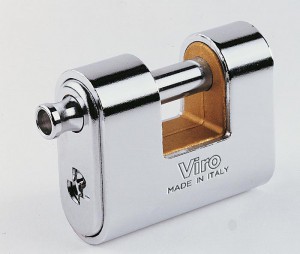After looking at “Padlocks & chains”, where we spoke in length about testing, mainly comparing Viro chains Made in Italy and imitations from the Far East, we are now focussing on padlocks.
The aim is always the same: to check the true quality of the products, providing you with some concrete evidence. We begin today by briefly summarising the three basic steps to recognise a good quality padlock.
Materials
The body of the padlock should be made of either of brass or hardened steel, never merely iron, let alone cheap lightweight alloys (such as zamak) which do not offer sufficient resistance to blows and cutting.
With regards to the shackle, on the other hand, which is the part most exposed to attacks, the best material is steel which has been correctly hardened and case-hardened. In fact, the hardening increases the mechanical strength, and consists in heating the metal to high temperatures and then cooling it rapidly, while case-hardening the surface, that is, its carbon enrichment, improves the resistance to cutting.
Thermal and chemical treatments
The resistance of a padlock to break-in attempts is as important as the potential lifetime of the product. The resistance to oxidation and corrosion is achieved by copper plating, which serves to bond on the surface the subsequent steps of nickel and chrome plating, which increase the resistance to corrosion.
Mechanism
A well-manufactured padlock does not have any significant clearance between its moving parts: between shackle and body, between body and plug and especially between pins and key. Poor machining makes the padlock vulnerable; a shackle that is not tightly secured is more easily ripped off.
In order to check that the shackle is more pull-resistant, it is necessary to check for the presence of two symmetrical recesses on the inner side of the shackle itself. These recesses serve to house the latches in the closed position, so that the shackle, when closed, is blocked in two points. Now let’s look at a video by an American locksmith showing the vulnerability of padlocks with a single latch closing the shackle and an example of a lock that wants to look like brass when it is actually zamak alloy.
This cross section through a Viro cylindrical padlock shows not only the presence of 2 latches for locking the shackle, but also the fact that these are made of stainless steel and that, thanks to the larger size of the padlock body, which is permitted by the cylindrical shape, the latches are placed on different axes, so as to greatly increase the resistance to ripping of the shackle from the body.
If one of the two latches is missing the shackle is much less resistant and can often be opened with a simple knife-like tool.

Moreover, in the padlocks in which instead of the shackle there is a rod, it is important that, in the point in which the head of the rod protrudes from the body, this has a programmed breakage point, so that, if an attempt is made to cut or pull off the rod whilst holding the head still, this will break under the force at a point selected by the manufacturer, preventing forced entry.
Even the shape of the body has a certain importance. In fact, a square shaped body offers greater possibilities for gripping the padlock with burglary tools, as it can easily placed in a vice or held firm whilst using cutting or drilling tools. For this reason, the best quality locks have, as much as possible, rounded shapes and rounded corners.
In the next blog we will compare an original Viro Made in Italy product with a product imported from the Far East. Keep following us to see what happens!
See the features of Viro cylindrical padlocks


